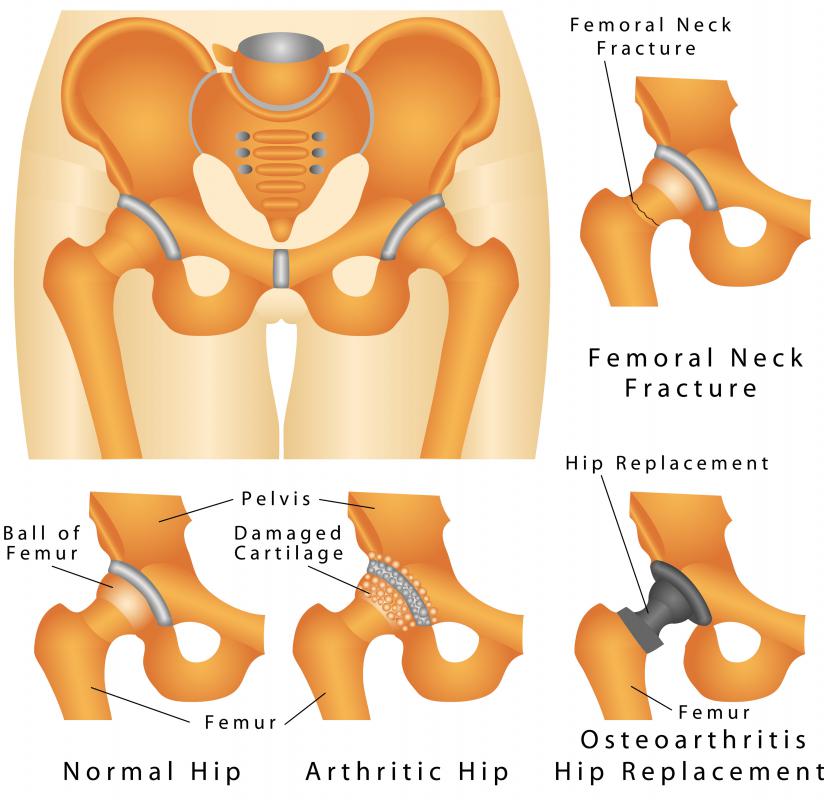At TheHealthBoard, we're committed to delivering accurate, trustworthy information. Our expert-authored content is rigorously fact-checked and sourced from credible authorities. Discover how we uphold the highest standards in providing you with reliable knowledge.
What is Ossification?
Sometimes referred to as osteogenesis, ossification is the development of bone within the osseous system. The term is used to refer to the natural formation of bone, such as in the development of a fetus and during the first years of life. At the same time, the term can also be applied to the occurrence of irregularities in bone development that lead to health issues in children and adults.
It is not unusual for some people to confuse ossification with the process of calcification. Essentially, calcification involves the formation of calcium crystals and salts within cells and tissue. This means that calcification occurs as one part of the process of ossification. However, it does not account for the entire process, and thus cannot be properly considered synonymous with osteogenesis.

There are two general classes of ossification or bone tissue formation that have to do with the normal process of bone development. Endochondral ossification as well as intramembranous bone formation identifies various aspects of the normal growth of bones throughout the body, both in terms of the development of cells within the bones as well as the proper development of the outer surface of the skeletal structure. A third class, known as heterotopic ossification, refers to situations where there is some type of atypical or abnormal bone development taking place.

When some type of abnormal bone ossification takes place, it is often necessary to utilize invasive measures to remove the excess tissue. Over the years, a number of incidents have been reported where the bone development process would become so erratic that the lives of the patients were threatened. For example, abnormal hip ossification could result in not only making it difficult to walk, but could also pose a threat to organs housed in the pelvic area, if the bone formation began to place excessive pressure on those organs.

At one time, the process of dealing with excessive ligament and cartilage ossification was extremely limited. Even today, the modern medical care is finite in regards to what can be accomplished in severe cases. However, thanks to more efficient surgical practices and a better understanding of how tissue of all types develops, successfully treating heterotopic bone formation in people of all ages is much more common. Ongoing research into identifying what triggers the abnormal bone development, as well as what factors could prevent the development of normal bone structure, continues and may yet provide additional strategies for dealing with these types of health issues.
AS FEATURED ON:
AS FEATURED ON:














Discussion Comments
@kentuckycat - I have actually had experience with heterotopic ossification, even though it wasn't nearly as serious as it could be in certain cases.
I was in a car wreck that did quite a bit of damage to my shoulder and elbow. It was enough that I needed to have surgery to repair the bones. After the surgery, I went back for a check-up and the doctor noticed some extra growth around my elbow. She said that it wasn't common, but it wasn't uncommon, either. They gave the bone several weeks to heal, and then I had to go back and have the extra ossification removed.
At least in my experience, the extra bone was formed because my body went overboard trying to repair the damage. I think the majority of cases are caused because of some sort of damage to the bone, and I've read that men are more at risk than women. My doctor also mentioned the same thing as the article that the problem is much more common in the hip.
I hope that helps to clear things up for you.
I have heard of ossification centers. Does anyone know what these are? I would have to assume they are related to bone formation in some way.
@kentuckycat - I was wondering about the pain, too. Surely there is some sort of overwhelming pain associated with the ossification. I'm curious what shape the new bone usually takes. Is it more like a bulge on the original bone, or is it more of a pointed bone?
What do they do to remove the bone? The article mentions invasive procedures, but after that happens, why doesn't the bone grow back? Maybe they have to put some sort of covering over the bone to keep it from growing back.
Are there any clues that would suggest what causes heterotopic ossification? For example, is it caused by genetics, or is it a random occurrence?
I have never heard of anyone having problems with bones growing unnecessarily in the body. It seems like it would be a very scary and unfortunate situation.
How do people become aware that they have abnormal bone growth? Is there some type of external indicator, or is it usually identified by the patient having pain?
Post your comments